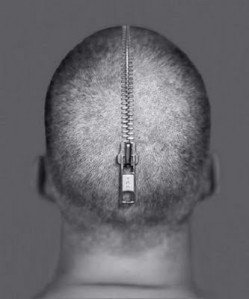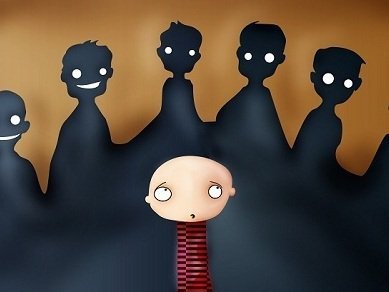Psychology of crime. What is in the mind of a criminal?
Over the past decades, the so-called crime psychology has been forming. Among its main areas of interest is the explanation of antisocial behavior where learning theories are relevant, the analysis of characteristics and individual traits. Crime is one of the social problems in which a greater need and possible utility of psychology is usually recognized. Antisocial behavior, mistreatment of women, sexual assault, the consumption of alcohol and other drugs linked to many crimes, social exclusion and frustration are the basis for aggression which creates extreme tension in the person. Throughout the post they will be shown the reasons why a person can commit a crime according to their mental state, their morphology and social influence that they may have.
Psychotic Analysis
Crimes is a reaction that comes from individual experiences of stress and tension. Multiple investigations have highlighted the relationship between the experiences of tension and the propensity to commit certain crimes, especially violent crimes. Many homicides, couple murders, injuries, sexual assaults and robberies with intimidation are perpetrated by individuals who experience strong feelings of revenge, sexual appetite, craving for money and property or contempt towards other people. A classic perspective in psychology is the hypothesis that relates the experience of frustration with aggression. Different sources of tension can affect the individual, among which are the impossibility of achieving positive social objectives or being deprived of graphs that they have or expect. As a result of the previous tensions, negative emotions would be generated in the subject, such as anger, which energizes his behavior in order to correct the situation. A possible corrective action against a source of experienced tension is criminal behavior. The suppression of the source relieves the tension and in this way the behavioral mechanism used to resolve the tension is consolidated, that is, the individual uses the crime to resolve or eliminate his tension easily.
Morphological Analysis
There are individual traits and characteristics that predispose to crime. Biopsychological research on individual differences and delinquency has highlighted the association of antisocial behavior with factors such as cranial injuries starting from the frontal lobe, low activation of the nervous system, low intelligence, attention disorder with hyperactivity, high impulsivity, propensity to the search for sensations and tendency to risk, low empathy and high extraversion. A psychological perspective still in force on individual differences and crimes is Eysenck's personality theory that includes the interaction of biological and environmental elements. In synthesis, Eysenck considers that there are three temperamental dimensions in interaction, the continuous extraversion that would be the result of a low activation of the reticular system and would manifest psychologically in the traits search of sensations, impulsivity and irritability. The dimension of neuroticism sustained in the emotional brain and showing a low effectiveness in the face of stress, anxiety, depression or hostility and dimension three of psychoticism that is considered to be the result of the neurochemical processes of dopamine and serotonin and would manifest itself in characteristics personal as the greater or lesser social instability, cruelty towards others, and aggressiveness. It is also possible that antisocial behavior is due to a marked delay in socialization processes.
Social influence
Crime, like all human behavior, is the result of constant interaction with the environment that surrounds it, facing the subject external reality. The personal assessment of a decision to make is expressed in the concrete behavior of the individual. From all this it is known that the study of the delinquent man comes from the development between the circumstances that do not depend on him. Among some causes for which the human being arrives to commit a crime and fall into delinquency are:
Extreme poverty: An economic situation of extreme poverty forces some people to look for wrong outputs, which lead them to act inappropriately or to fall into the problems of drug addiction, alcohol and other excesses, and sometimes suicide.
Unemployment: Another cause that is detected is unemployment, which faces and lives a large number of people; people who attempt against the property and physical integrity of citizens, that is, steal, often do so because they do not have a stable job that guarantees them enough income to support their family and therefore take these measures to temporarily suppress their situation.
The lack of education: This is another cause, the scarce and often non-existent education of citizens generates crime, aggression and, of course, insecurity in those who remain on the sidelines, but who suffer the consequences of this situation.
Neglected family environment: Among the family factors that can have a negative influence we can include the following:
The way of disciplining children by parents.
A conflict or a parental separation
Parents or criminal brothers.
It has been demonstrated how psychology has good theories and explanations of delinquency, with precise analysis of the beginning, development and outcome in criminal careers and, especially, with solid psychological treatments that achieve remarkable results in the decrease of recidivism rates in the crime. As a result of all of the above, a considerable number of psychologists work in developed countries in the areas of analysis, prediction, prevention and treatment of crime.
The reasons why a person can commit a crime have been clearly shown. There are many sources that can affect a subject and motivate to perform improper or unlawful acts. The importance of all this is not to fall into these criminal acts and have awareness and good knowledge of what is right and what is right. Parents and educators are advised to pay more attention to children and to be taught the values and teach them what is right.




Thanks for the post, aeuribe.
I hope you don't mind if I test out some sentiment analysis on your post. This is an experimental bot running on posts that have exceptional positivity or negativity. The goal is to iterate towards a bot that gives content creators and curators actionable and useful information.
Your post was selected because it is in the 99th percentile for negativity.Your post had an average negative sentiment of -0.164, an average positive sentiment of 0.059, and an average normalized sentiment of -0.1
The most positive sentence in your post had a normalized positivity score of 0.148:
"There are many sources that can affect a subject and motivate to perform improper or unlawful acts."
The most negative sentence in your post had a normalized negativity score of -0.487:
"* A conflict or a parental separation
Kya hai ye bawal...
,,,,,,,,,,,,,,,,,,,,,,,,,,,,,,
Congratulations @aeuribe! You received a personal award!
You can view your badges on your Steem Board and compare to others on the Steem Ranking
Vote for @Steemitboard as a witness to get one more award and increased upvotes!